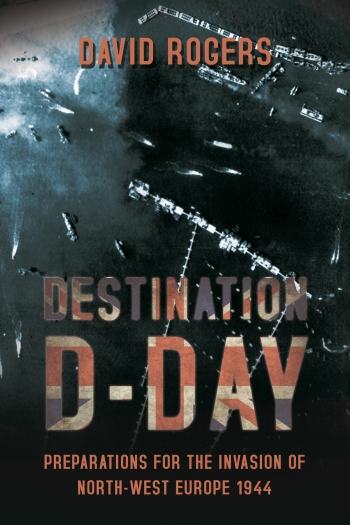Destination D-Day: Preparations for the Invasion of North-West Europe
- Cena
- 22,90 €
Šifra oglasa: 11915021
Osnovne informacije
- Vrsta ponudbe
- Prodam
- Lokacija
- Goriška, Nova Gorica, Solkan
- Stanje
- novo
Opis oglasa
David Rogers
Destination D-Day: Preparations for the Invasion of North-West Europe 1944
Mehka vezava, 328 strani, prib. 70 fotografij, zemljevidov in tabel.
Kratek opis v angleškem jeziku:
Arguably the Normandy landings were the most complex single operation in the history of modern warfare, maybe of any conflict. Spread over five beaches assigned to both the US and British/Canadian Forces, the need for detailed planning was paramount. There was obviously planning for the assembly of troops and the armada of ships, boats and tugs to transport the men and equipment to their destination. Yet this particular activity was fairly late in the planning stages. For example the Duplex Drive tanks used from D-Day onwards were the subject of a US patent which was filed on 13 March 1942 by N. Straussler. The Beach Groups, a combined British Force comprising all three services, assembled in Scotland in the summer/autumn of 1943, and spent many months on manoeuvres. Operation PLUTO ('pipeline under the ocean') started on 14 August 1942, involving engineers, scientists and members of the armed forces working together to design and develop a pipeline capable of being deployed from the Isle of Wight to the Normandy Beaches, pumping fuel to Normandy. Work on the Mulberry Harbour, the floating temporary harbour erected on two sites supplying British/Canadian soldiers from one beach and the American troops from another, commenced in 1941 at Garlieston, Scotland. Fabrication for the Phoenix caissons (the final chosen construction method) took place along the English South Coast. Some of the Phoenix caissons were abandoned where they were made and are still visible. Further activities were planned to support the French and create an infrastructure. In one case the Royal Engineers landed a train in case the retreating Germans either destroyed the railway network or immobilised the trains. Additionally an organisation, known as Civil Affairs, moved in behind the tanks to set up civil administration. This unit moved slowly through France to Holland. The author provides rich and fascinating detail on these and other aspects of the preparations in the UK for D-Day and the battle for Normandy.
Kliknite na "vsi oglasi tega prodajalca", na voljo preko 800 različnih knjig z vojaško, zgodovinsko in letalsko tematiko.
Poštnino plača kupec, osebni prevzem je možen v Solkanu, oziroma Novi Gorici in bližnji okolici.
Destination D-Day: Preparations for the Invasion of North-West Europe 1944
Mehka vezava, 328 strani, prib. 70 fotografij, zemljevidov in tabel.
Kratek opis v angleškem jeziku:
Arguably the Normandy landings were the most complex single operation in the history of modern warfare, maybe of any conflict. Spread over five beaches assigned to both the US and British/Canadian Forces, the need for detailed planning was paramount. There was obviously planning for the assembly of troops and the armada of ships, boats and tugs to transport the men and equipment to their destination. Yet this particular activity was fairly late in the planning stages. For example the Duplex Drive tanks used from D-Day onwards were the subject of a US patent which was filed on 13 March 1942 by N. Straussler. The Beach Groups, a combined British Force comprising all three services, assembled in Scotland in the summer/autumn of 1943, and spent many months on manoeuvres. Operation PLUTO ('pipeline under the ocean') started on 14 August 1942, involving engineers, scientists and members of the armed forces working together to design and develop a pipeline capable of being deployed from the Isle of Wight to the Normandy Beaches, pumping fuel to Normandy. Work on the Mulberry Harbour, the floating temporary harbour erected on two sites supplying British/Canadian soldiers from one beach and the American troops from another, commenced in 1941 at Garlieston, Scotland. Fabrication for the Phoenix caissons (the final chosen construction method) took place along the English South Coast. Some of the Phoenix caissons were abandoned where they were made and are still visible. Further activities were planned to support the French and create an infrastructure. In one case the Royal Engineers landed a train in case the retreating Germans either destroyed the railway network or immobilised the trains. Additionally an organisation, known as Civil Affairs, moved in behind the tanks to set up civil administration. This unit moved slowly through France to Holland. The author provides rich and fascinating detail on these and other aspects of the preparations in the UK for D-Day and the battle for Normandy.
Kliknite na "vsi oglasi tega prodajalca", na voljo preko 800 različnih knjig z vojaško, zgodovinsko in letalsko tematiko.
Poštnino plača kupec, osebni prevzem je možen v Solkanu, oziroma Novi Gorici in bližnji okolici.
Zemljevid
Opomba: prikaže se približna lokacija vašega oglasa
vojaskeknjige
Vsi oglasi tega oglaševalca
Uporabnik je telefonsko številko preveril v državi Slovenija
Uporabnik ni trgovec in zanj ne veljajo določbe EU o varstvu potrošnikov.
- Naslov: 5250 Solkan, Goriška, Slovenija
- Oglas je objavljen
- 24.10.2024. ob 15:45
- Do poteka še
- Oglas je prikazan
- 69 -krat
vojaskeknjige
Vsi oglasi tega oglaševalca
Uporabnik je telefonsko številko preveril v državi Slovenija
Uporabnik ni trgovec in zanj ne veljajo določbe EU o varstvu potrošnikov.
- Naslov: 5250 Solkan, Goriška, Slovenija








